What does a town do with a vast web of stone quarries with a “Closed” sign on every door? The folks in Les Baux-de-Provence turned theirs into the largest permanent multimedia show in France. Carrières de Lumières (formerly called Cathédral d’Images) is a smashing success. Close to 400,000 visitors attended last year’s show.
For over 2000 years, the quarries in Les Baux-de-Provence were a primary source of limestone for this area. The Romans exploited the quarries for material to rebuild the nearby Celto-Liguirian town of Glanum back in 200 BC and later the Municipal Arch and the Mausoleum that still stand across from Glanum. The Roman city of Arles rose up from the ground with limestone carted over from Les Baux. In the 11th century, the notorious Lords of les Baux built their formidable citadel out of limestone from these neighboring quarries. In the 14th century, the ramparts of
Aigues-Mortes were created with massive stones from Les Baux (and Beaucaire).
These quarries, which came to be known as Les Carrières du Val d’Enfer or the Quarries in the Valley of Hell, continued to provide limestone until they were closed in 1935.
The first time the quarries were used in any way other than their intended purpose was in 1959 when Jean Cocteau used them as a backdrop for his film, “Le Testament d Orphée.” (Segments of this film have been shown in recent shows.) In 1977, a sound and light show that featured the work of world famous artists was projected on to the huge rock walls while music emanated from a state-of-the-art sound system, fully involving audiences. Similar shows followed until they started more regularly in 2006.
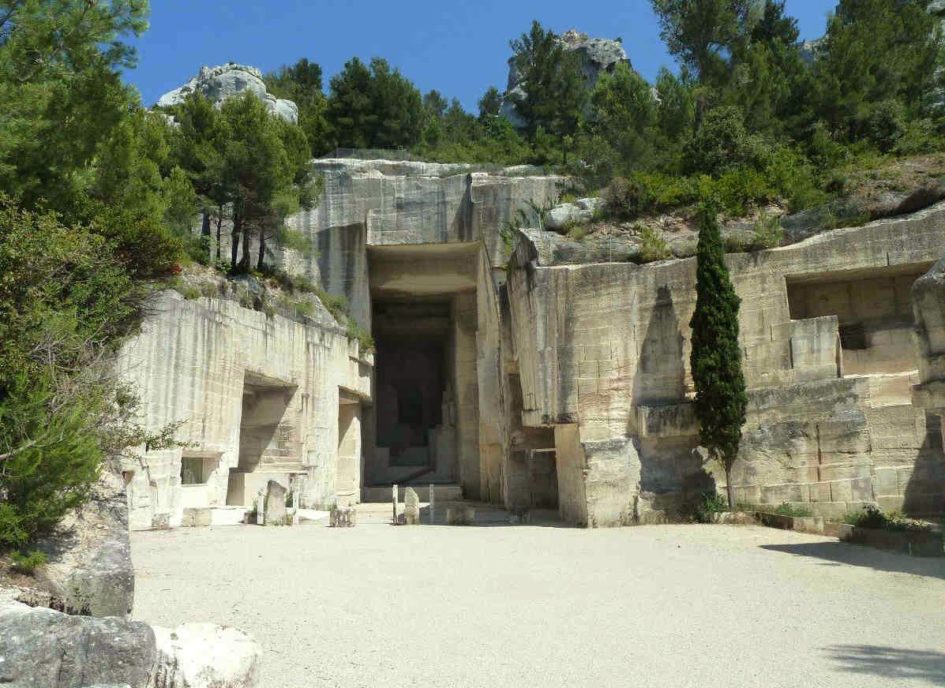 |
| Entrance to Carrières de Lumières © Culturespaces |
Today, the quarries are the venue for the wildly popular multimedia art shows that have featured Cezanne (2006); van Gogh (2008); Picasso (2009); van Gogh and Gauguin (2012); and Monet, Renoir, and Chagall (2013).
Kathy Coleman Wood, who knows this part of Provence very well and has attended these shows since 2008, said that she and her family “were enthralled by the experience” from the very first visit.
Kathy and her husband Charley Wood own and operate “
The Luberon Experience” tours, a venture they began in 2006 and, since then, have welcomed…
thirty groups to the Luberon. A visit to Carrieres de Lumieres has become a regular part of the day when they tour “beyond the Luberon.”
“I’m not sure there is anything like [these shows] in the world,” Wood said. “It resonates with people of all ages….I love to see the small children dancing in the changes images on the floor.”
The typical show is about 35 minutes long. Visitors may enter at any time or may wait until the beginning of the show.
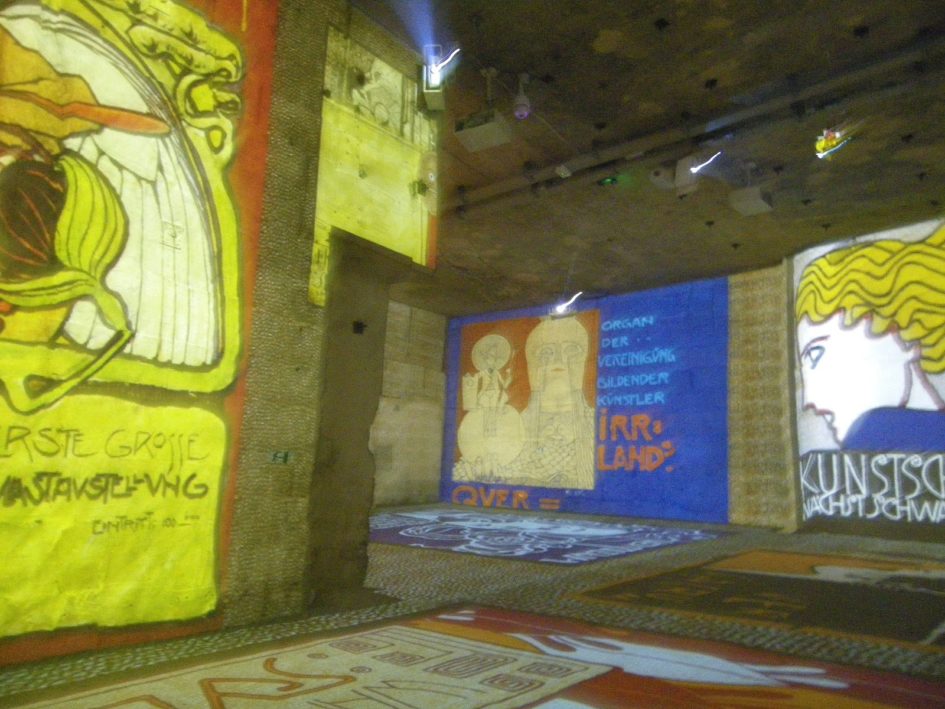 |
| Carrières de Lumières Photo by Kathy Coleman Wood |
“They really are an ‘experience,’ but there is a story or sequence to what you’re seeing,” Wood said. “You’re really enveloped in the show, as something different may be happening on the various surfaces.
Sometimes I move around a lot during the show but often I stand in one place where I can see in many different directions.”
When our family went to see the van Gogh and Gaugin feature in 2012, we stayed through two shows—it was captivating and, as Wood suggested, there were lots of details to assimilate. I think you can watch it until you have your fill!
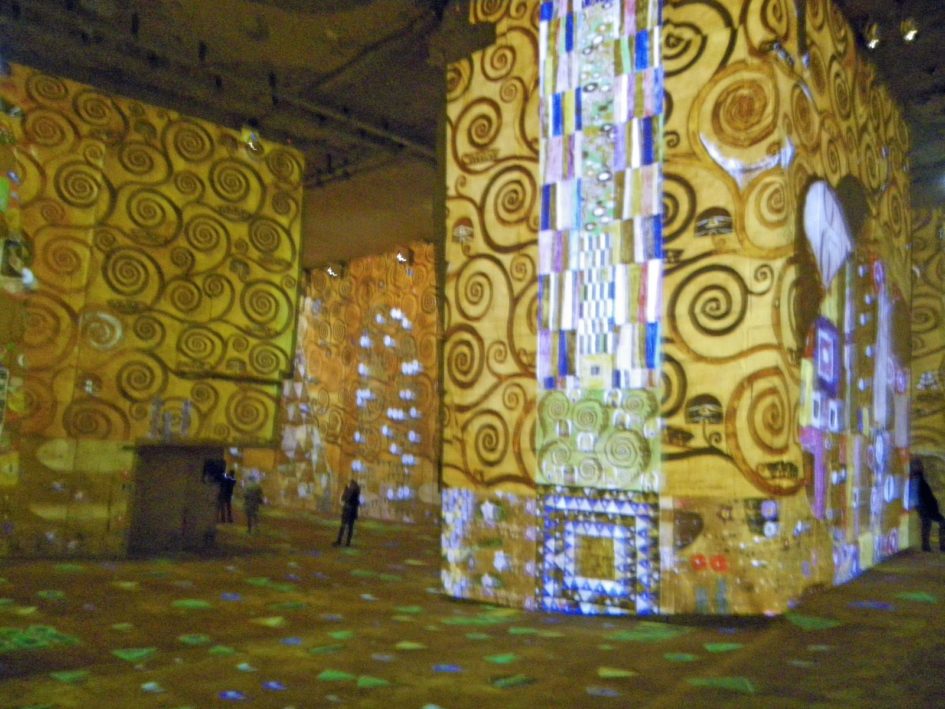 |
| Carrières de Lumières Photo by Kathy Coleman Wood |
This year’s show is entitled “Klimt and Vienna, a Century of Gold and Colours” and is described as taking “you on a journey through 100 years of Viennese painting to the heart of the bright, colourful works of Gustav Klimt, his contemporaries and the artists he inspired.”
Gustav Klimt (1862-1918) was an Austrian Symbolist painter who was a founding member and leader in the Viennese Secession movement. Begun in 1897, the goal of this group was to provide a platform in Vienna for “unconventional young artists” (regardless of their particular genre of art). He is best known for his use of gold and decorative motifs and for his focus on the female body as an erotic object. “The Kiss” is probably is most famous painting and typifies his unique style. The Carrières de Lumières includes portraits, landscapes, nudes, bright colors, and lots of gold, all of which changed the course of Viennese painting in the 20th century.
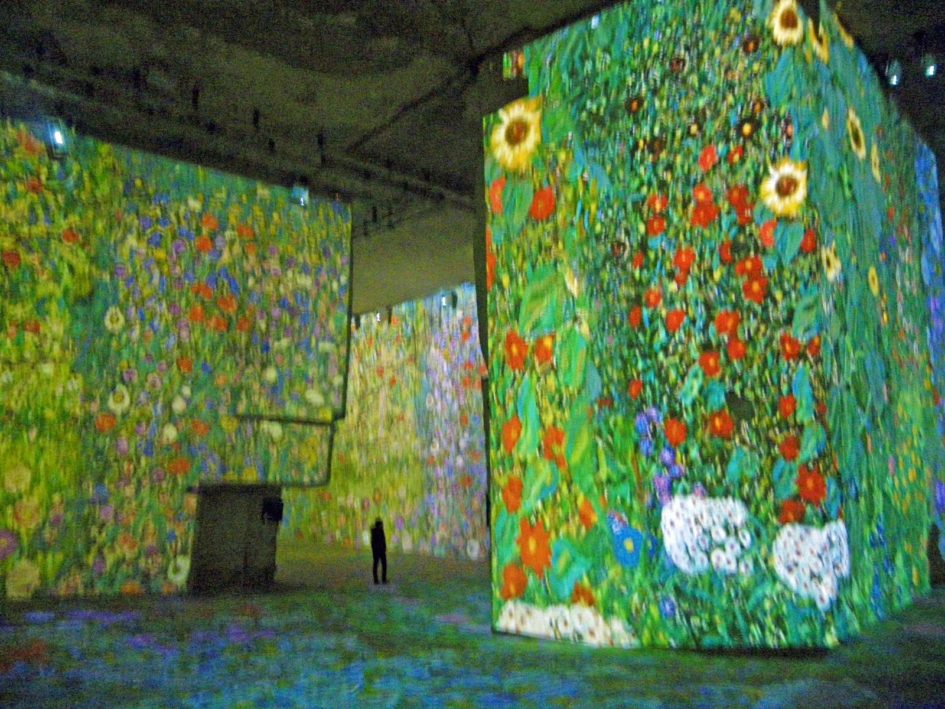 |
| Carrières de Lumières Photo by Kathy Coleman Wood |
After his death, his art work has commanded some of the highest prices paid for paintings. (For those of you in New York, one of those paintings, the 1907 portrait entitled “Adel Bloch-Bauer I,” hangs in the Neue Gallery; it was purchased for the museum in 2006 by Ronald Lauder for $135 million, apparently the highest price ever paid for a painting at that time.)
The work of two other Viennese artists who were influenced by Klimt’s work are included in the show: Egon Schiele (1890-1918) and Friedensreich Hundertwasser (1928-2000).
Kathy and Charley, along with Kathy’s parents, went to go see the Klimt show a few weeks ago. They wanted to check it out for their upcoming groups of travelers.
Wood confessed that she was unsure whether she (or her husband and her parents) would like the Klimt show, but was surprised that everyone loved it and they enjoyed learning about the development of art in Vienna over the course of 100 years.
“The colors are incredible and the music is wonderful…the images and music really work together,” Wood said. She added that it seemed there was more movement in the new show and new approaches in how the images appeared.
There is over 6000 square meters (65,000 square feet) of surface and 14-meter (45-foot) high walls on which over 70 video projectors shine their images. (There may be closer to 100 projectors with this show!) Images numbering as many as 3000 comprise the Klimt show. Music is amplified by a 3D audio system designed specifically for the unique surfaces of the quarry walls.
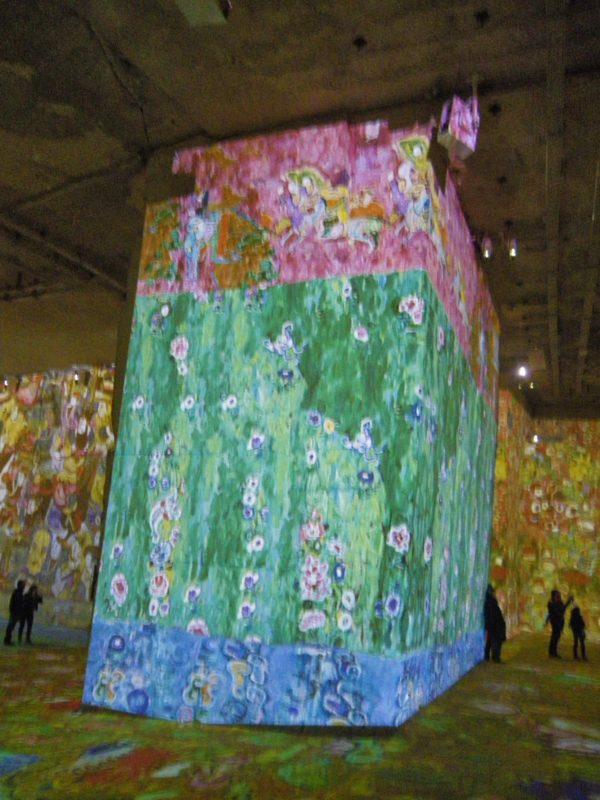 |
| Carrières de Lumières Photo by Kathy Coleman Wood |
Wood’s mother seemed to capture the essence of the experience well when she wrote:
This place is very hard to describe. We were in a quarry and you have to notice the small people [in the photos] to appreciate just how large it is. The scenes on the walls are constantly changing and moving, even down onto the floor under your feet. Stereo music surrounds you. It taps into all of your senses at once. Almost overwhelming. A really spectacular experience.
______________________________________________
Notes:
“Klimt and Vienna, A Century of Gold and Colours” (35 minutes) runs from 7 March 2014 to 4 January 2015. A short film (8 minutes) entitled “Invisible Cities” is also showing.
The Carrières are open every day.
From 7 to 31 March: 10 a.m.-6 p.m.
From 1st April to 30 September: 9.30 a.m.-7 p.m.
From 1st October to 4 January 2015: 10 a.m.-6 p.m.
Last admission 1 hour before the Carrières closes.
Tickets are priced from 5€ to 10€, with children under 7 free.
Carrières de Lumières is located 800 m from the Château des Baux-de-Provence, 15 km north-east of Arles and 30 km south of Avignon. Route de Maillane 13520 Les Baux de Provence
Free parking upon presentation of the reservation slip for the Carrières.
Dress for the cool temperature inside the quarries: wear shoes and socks and bring a jacket or sweater!
For more information and to purchase tickets, visit their website.
There are many other things to do in this area:
The medieval hilltop village of Les Baux and its citadel are right next door, but I think this stop would be too much to pack into the day. Likewise with the Celto-Liguirian-Roman ruins of Glanum–it is also very close to the Carrières de Lumières but too much for one day.
Saint-Paul-de-Mausole, where van Gogh was hospitalized for psychiatric treatment, is also nearby and might pair well with a show in the quarries.
This is olive oil and wine country—consider some tastings!
For more information about the Wood’s Luberon Experience tours, please visit their
website. For a peak at their itinerary,
click here. (Heads up: they book up quickly.)
The Woods also offer similar weeks in other parts of France and Europe, including the Dordogne, the Salzkammergut, the Bavarian Alps, Tuscany, and the Cotswolds. For more information, visit
www.european-experiences.comFinally, they own and rent an apartment in Bonnieux; for more information, visit
www.vrbo.com/452357
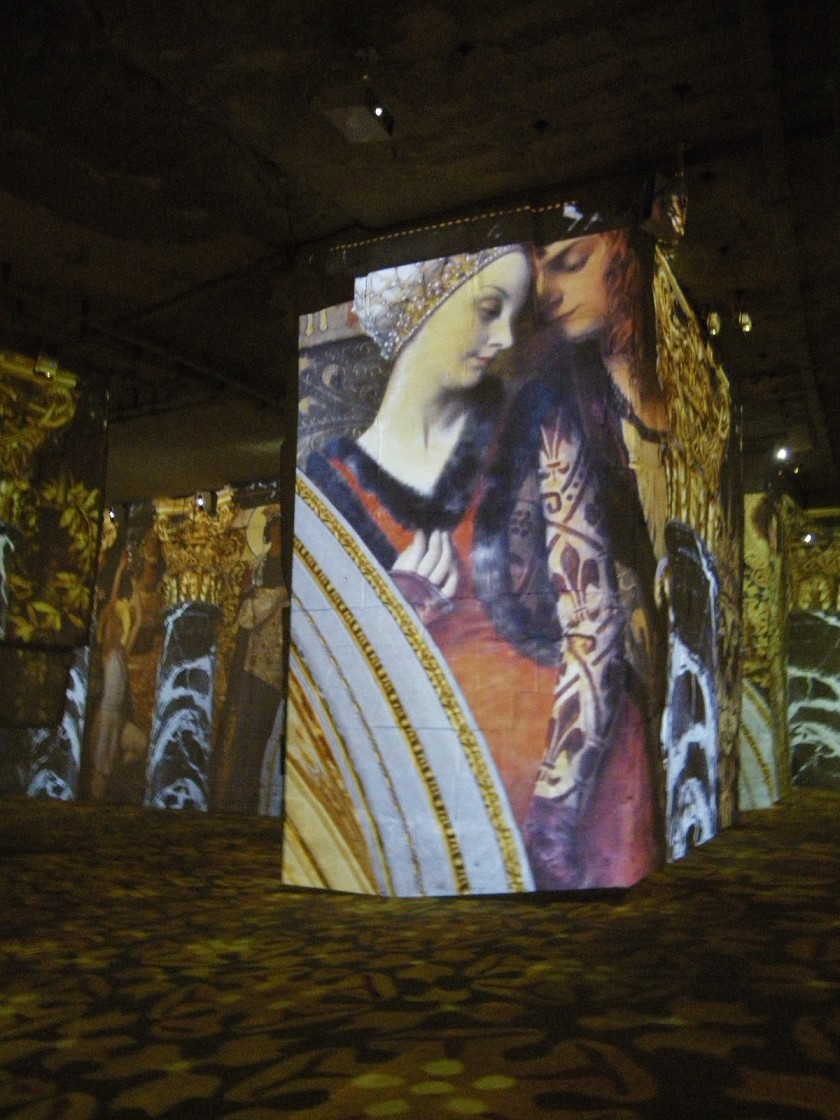





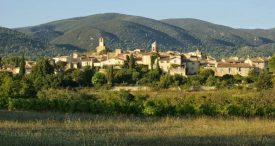
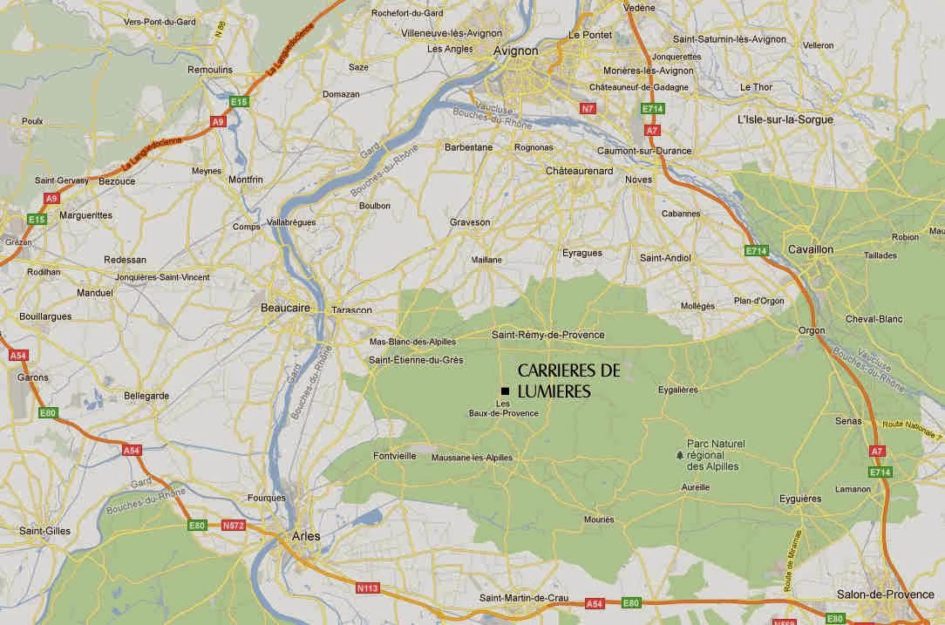
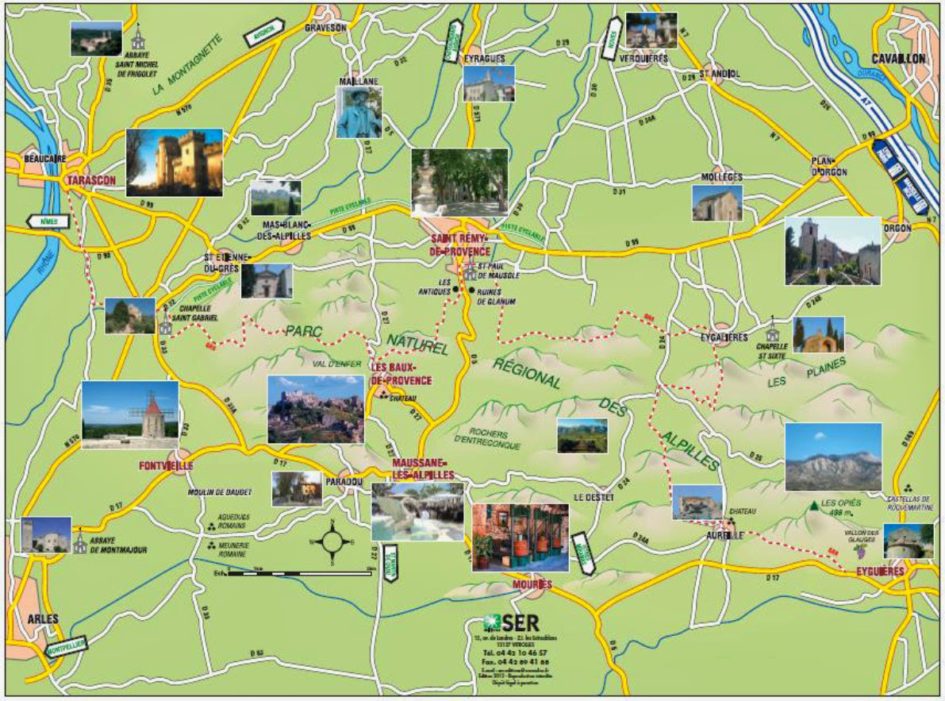





Hi Susan,
I enjoyed the Modern Troubadours account of Carrières de Lumières. I've adored Klimt and others of his generation since I was a college kid and their work was considered condescendingly, laughably, horrifically out of date. I'm so pleased to see his work gaining wider and wider recognition.
Of course, when I watched the dazzling little video clip, I was puzzled by the use of music from 80 years earlier, the vibrant opening of the second movement of Beethoven's 9th symphony. You know me, always comparing back and forth across genres, trying to wrap my head around what was happening at any given time. I love that music, yet wondered why they didn't use music by a composer contemporary to the Vienna Secessionist movement, someone like Gustave Mahler, Arnold Schoenberg, Alban Berg, Anton Webern (maybe a bit too young at that moment) or Richard Strauss. (When I was working with a film company on an orientation film for Strawbery Banke Museum, I had a devil of a time getting them to understand that it was important to have music contemporary to the (many) periods shown – they almost got it, but lapsed on the concept that music not only comes into fashion, but falls out of fashion and is forgotten — another story).
So, me being…, well, me, I started searching for information, and was fascinated by what I found.
Quelle surprise: the 1902 Vienna Secession exhibition revolved around Beethoven! Who knew? Apparently it was not so much for Beethoven's sublime music, because that was becoming ensnared in an increasingly ossified Viennese concert programming. According to some academics, Beethoven was chosen for emblematic reasons. As we all know, he was one of the first composers to gain recognition working outside the patronage system of church and princes, and managed to gain both recognition and a following in spite of his sometimes bad-boy behavior. The secessionists used him as a symbol of the artist seeking independent recognition in his own right… just what they were looking for.
Not only that, but Gustave Mahler worked with the secessionists (at least my hunch in that direction was on target). Given the theme of the show, Mahler's contribution was not his own sublime music, but a performance of the last movement of Beethoven's 9th for opening night at the show! Apparently it was a revitalized and revitalizing interpretation. One must wonder if Mahler's interpretation informs modern interpretations of that monumental composition.
I find all this fascinating, though I doubt anyone else on the planet would! Your blogs so often send me off on tangents that amuse me on a gray winter Sunday.
I'd seen pictures of those quarries once before, and thought at the time the image of the entrance would make a fabulous set design for just about any performance of any composer's setting of Orpheus and Euridice, from Monteverdi's to Phillip Glass'. But that's a different subject!
Susan,
Vraiment spectaculaire: Merci bien!
-Henry
Thank you so much for this wonderful article…since purchasing a coastal vacation property in the US we have to be content with armchair Euro travel for awhile :0) Loving your blog sooo much. Please don't stop.
Denise
Hi Susan, I loved your piece and the background info you provided about the quarries and the artists. I always appreciate your well-researched posts. The information from the other commenter above was also very interesting!! I'm glad the timing of our visit last weekend fit with your plans for this post. We're looking forward to seeing this show again in May and sharing it with our groups.
Kathy
Susan, what an *especially* fascinating post this week! I'm eager to visit the Klimt exhibition and have this extraordinary experience…This is Google glass and virtual reality brought to life! In Malta we have many used up quarries, as the main building material is limestone…and my head is spinning with possibilities for the future and a similar experience created here – perhaps exploring our Neolithic history! Thanks so much, as always.
Henry,
Merci à vous!
Bis,
Susan
You must be a blogger~you know exactly what to say to make one feel good! Thanks so much. Please don't stop reading! Any subjects you are particularly interested in knowing more about?
This information adds such depth to our understanding and appreciation of the show. Several readers have told me how interesting they found your "research." I am so glad that you let me post this personal email for all to read!
Kathy, your input was immensely helpful and reflects the same thoughtful and astute observations that set the stage for your tour groups! To be one of the "Top 50 Tours of a Lifetime" according to National Geographic Traveler Magazine is quite an accomplishment!
Keep me posted on what you are up to in Provence!
Hi Cloe, It seems to me that this type of show would work perfectly in Malta. As you no doubt saw in one of the links, Culturespaces is now charged with creative these shows–I have seen some of their other projects which are also top-notch! Gianfranco Iannuzzi, a sociologist and photographer, is the creative architect behind these shows! Thanks for the nice feedback!
Also, Cloe, thanks for the articles about various things French and for the terrific cartoon! I particularly loved the video of the farmers and their sheep heading into the Louvre! I posted them all on FB —
https://www.facebook.com/TheModernTrobadors —
where they generated a lot of "likes."